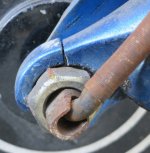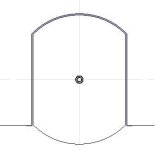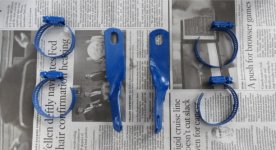e-beach said:
I don't understand why my e-bike keeps cracking up,... literately.
The usual reason for that specific crack type is motor torque (axle torque) against the tips of the dropouts working them back and forth, because if the fit of a torque arm is not absolutely perfect, the axle can still wiggle just a teeensy bit..and if the wiggle is enough to put any pressure on the dropout tips vs the dropout "top", then the twisting force can pry the dropouts apart even just a little bit.
If it can do that, then it can rock back and forth in the torque arm and either deform it or if the arm is thin it can cut into the axle, which then allows a little more movement in the dropouts, putting more force on the tips, which allows more force against the torque arm, and it's a spiraling cycle.
This doesn't always lead to failure, because sometimes there's a limit to how much deformation the torque arm actually does, eventually stopping the process before dropouts reach failure levels of stress.
HOwever--what usualy encourages dropout failure is filing the dropout deeper, and leaving a sharp corner at the root--this is a stress riser and is where cracks start from. If the root corners are smoothly curved, they are less likely to start cracking from the same stresses a sharp corner would.
The cracks can also start because of bad castings, with air bubbles or other defects in them. Or machining and/or handling errors before you ever even saw the parts (often hidden under paint so you never will see it).
As noted by others, they can also start from side pressure by washers/nuts, but if everything was already aligned and nothing has been disassembled at any time then that's probably not the cause here. However, if the wheel was taken off and put back on, or axle nuts loosened and tightened, it is possible taht the change in presssure points of even just a tiny bit could encourage a stress crack that had already started from whatever reason.







